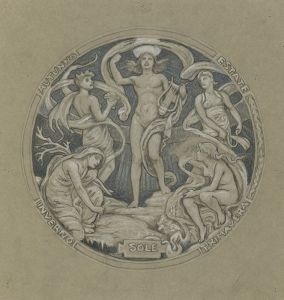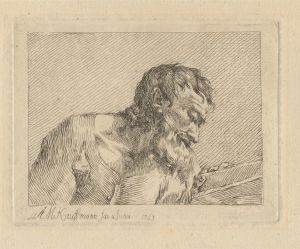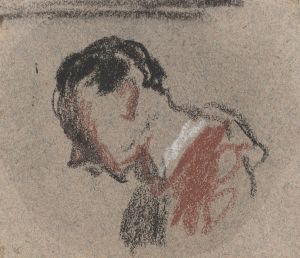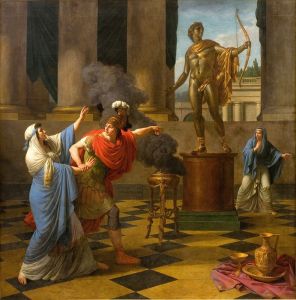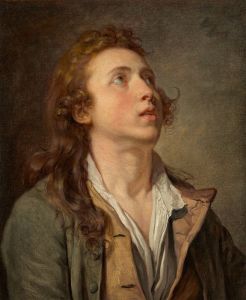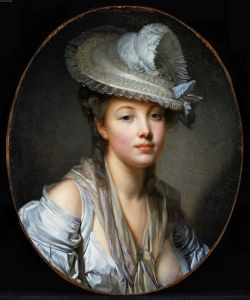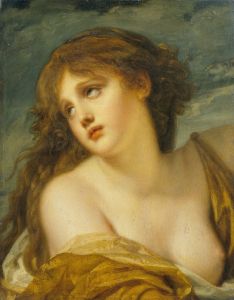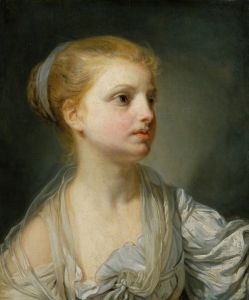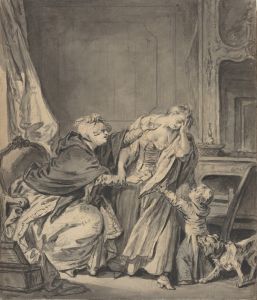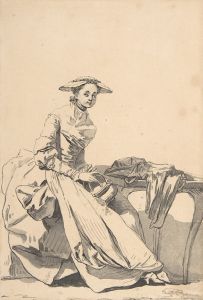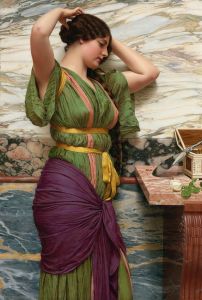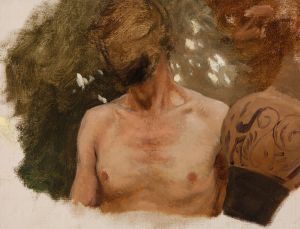
Head of Caracalla
A hand-painted replica of Jean-Baptiste Greuze’s masterpiece Head of Caracalla, meticulously crafted by professional artists to capture the true essence of the original. Each piece is created with museum-quality canvas and rare mineral pigments, carefully painted by experienced artists with delicate brushstrokes and rich, layered colors to perfectly recreate the texture of the original artwork. Unlike machine-printed reproductions, this hand-painted version brings the painting to life, infused with the artist’s emotions and skill in every stroke. Whether for personal collection or home decoration, it instantly elevates the artistic atmosphere of any space.
Jean-Baptiste Greuze's "Head of Caracalla" is a notable work by the French artist, who is renowned for his genre paintings and portraits. Greuze was born on August 21, 1725, in Tournus, France, and became a prominent figure in 18th-century French art. He studied at the Royal Academy of Painting and Sculpture in Paris, where he developed his skills and gained recognition for his detailed and expressive works.
"Head of Caracalla" is a painting that exemplifies Greuze's interest in capturing intense human emotions and expressions. The subject of the painting, Caracalla, was a Roman emperor who ruled from 198 to 217 AD. Known for his tyrannical reign and the infamous massacre of his brother Geta's supporters, Caracalla's historical image is often associated with cruelty and ruthlessness. Greuze's depiction of Caracalla focuses on the psychological depth of the emperor, emphasizing his complex character through the detailed rendering of his facial features.
The painting is characterized by its meticulous attention to detail, a hallmark of Greuze's style. The artist's use of light and shadow enhances the three-dimensionality of Caracalla's face, bringing out the textures of the skin and the intensity of his gaze. Greuze's ability to convey emotion through subtle nuances in expression is evident in this work, as the viewer is drawn into the psychological intensity of the subject.
Greuze's "Head of Caracalla" reflects the artist's interest in classical themes and his ability to blend them with contemporary artistic techniques. During the 18th century, there was a renewed interest in classical antiquity, and artists like Greuze often drew inspiration from historical figures and events. This painting is a testament to Greuze's skill in merging classical subject matter with the emotive style that characterized much of his work.
The painting is also an example of Greuze's departure from the Rococo style that dominated French art in the early 18th century. While Rococo was known for its lightness and decorative qualities, Greuze's work often delved into more serious and moralistic themes. "Head of Caracalla" aligns with this shift, as it presents a more somber and introspective portrayal compared to the frivolity of Rococo art.
Throughout his career, Greuze achieved significant acclaim for his ability to capture the human condition, and "Head of Caracalla" is a prime example of this talent. His works were celebrated for their emotional depth and technical precision, earning him a place among the leading artists of his time. Despite facing criticism later in his career for his adherence to a more traditional style amidst the rise of Neoclassicism, Greuze's contributions to art remain influential.
Today, "Head of Caracalla" is appreciated not only for its artistic merit but also for its historical significance. It serves as a window into the 18th-century fascination with classical antiquity and the ways in which artists like Greuze interpreted and represented historical figures. The painting continues to be studied and admired for its technical excellence and its ability to convey the complexities of human emotion.





